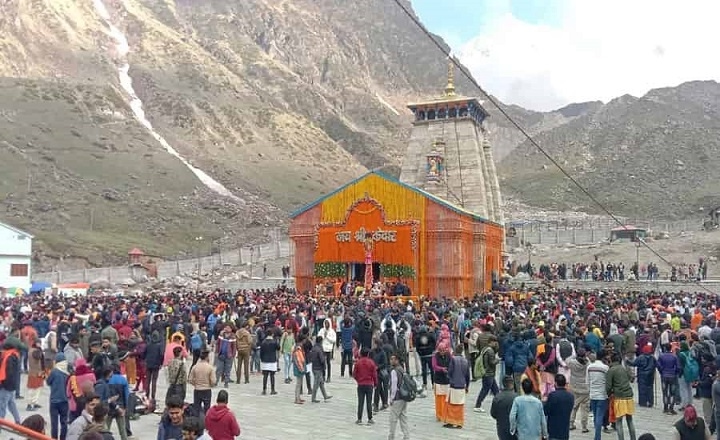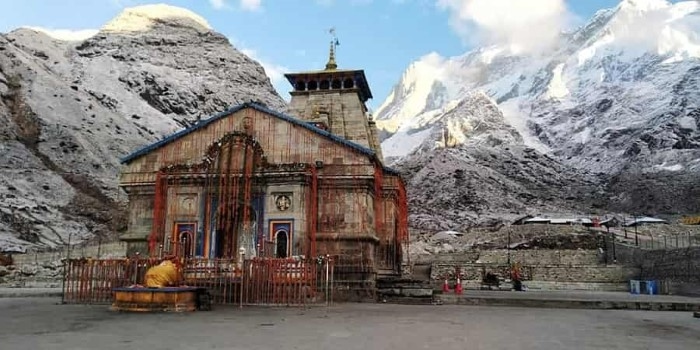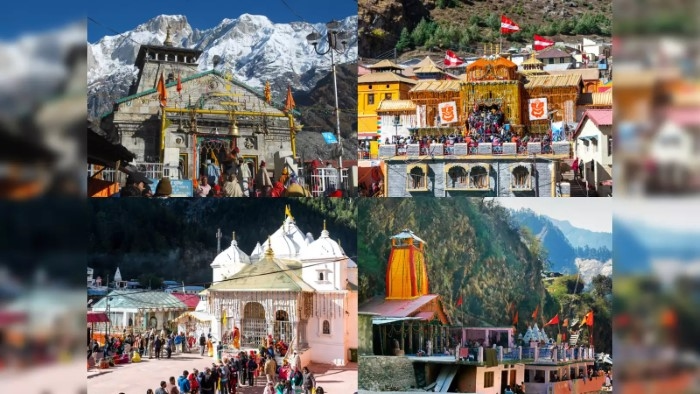Kedarnath, one of the holiest shrines in India, is nestled in the mighty Himalayas, attracting pilgrims from all over the world. The Kedarnath story is not just about a physical journey to the temple, but a spiritual odyssey that connects people to the divine. This article takes you through the legends, the historical significance, and the importance of the Kedarnath temple, exploring the different facets that make it a revered destination for millions.
Introduction to Kedarnath
Kedarnath, located in the state of Uttarakhand, India, is famous for the Kedarnath Temple, dedicated to Lord Shiva. The temple sits at an altitude of 3,584 meters above sea level and is part of the Char Dham Yatra, one of the most important pilgrimage circuits in Hinduism. The Kedarnath story is steeped in history, mythology, and devotion, making it a must-visit for pilgrims and history enthusiasts alike.
Significance of Kedarnath in Hinduism
The Kedarnath temple is not just a religious site; it holds deep spiritual significance for Hindus. It is believed that the temple was built by the Pandavas, the heroes of the Mahabharata. According to Hindu mythology, Lord Shiva himself resides in the temple, and visiting it is considered one of the holiest acts a devotee can perform. Kedarnath holds a prominent place in the Char Dham circuit, along with Yamunotri, Gangotri, and Badrinath.
The sacredness of Kedarnath lies in its association with the mythology of Lord Shiva. As per the legends, after the Kurukshetra war, the Pandavas were searching for a way to absolve themselves of the sins committed during the war. They sought the blessings of Lord Shiva, but the god was reluctant to meet them. Eventually, Lord Shiva assumed the form of a bull and fled to Kedarnath, where the Pandavas found him.
The Mythological Roots of the Kedarnath Story
Lord Shiva’s Encounter with the Pandavas
The story of Kedarnath’s divine origin begins with Lord Shiva, who, after the Pandavas’ request for forgiveness, took the form of a bull to avoid being found. As the Pandavas chased him, the bull (Lord Shiva) dived into the earth at Kedarnath, leaving only the hump exposed. This marked the location of the Kedarnath Temple. The temple is believed to have been constructed at this spot to commemorate Lord Shiva’s appearance.
The Myth of the Lord’s Immortality
Another popular myth associated with Kedarnath is the belief that Lord Shiva’s divine presence remains intact at the shrine, despite the passage of centuries. This idea of immortality ties into the significance of Kedarnath as not just a place of worship, but a spiritual refuge where time and mortality seem irrelevant in the presence of the divine.
The Architecture and Design of the Kedarnath Temple
The Kedarnath Temple is an architectural marvel that blends the ancient with the mystical. Built with large, heavy stones, the temple’s design is simple yet grand. The temple is dedicated to Lord Shiva in the form of a Jyotirlinga (a symbol of divine energy), which is worshipped by devotees.
The temple’s inner sanctum houses the image of Lord Shiva, and devotees offer their prayers before the Jyotirlinga in a serene, almost otherworldly atmosphere. The Kedarnath temple is located on a raised platform, making it visible from the surrounding landscape, symbolizing the direct connection between the divine and the natural world.
Historical Events Surrounding the Kedarnath Temple
Over the centuries, Kedarnath has seen many trials and tribulations, including natural calamities and invasions. Despite these challenges, the temple has withstood the test of time, becoming an eternal symbol of resilience and faith.
The 2013 Kedarnath Floods
One of the most significant events in recent history was the catastrophic 2013 floods in Uttarakhand. The state faced one of its worst natural disasters, and the Kedarnath region was severely affected. Torrential rains led to flash floods, causing massive destruction, including the destruction of roads and homes. Thousands of people were trapped in the region, and many lost their lives.
Despite the devastation, the Kedarnath Temple remained largely intact, which many believe was a divine intervention. The disaster drew national and international attention to the region and further solidified Kedarnath’s status as a place of spiritual significance. Since then, the restoration of the temple and the surrounding infrastructure has been a major priority for the state government and various NGOs.
Restoration and Reconstruction Efforts
The 2013 floods left the Kedarnath region in ruins, but efforts to restore the temple and its infrastructure began almost immediately. The government, along with several charitable organizations, worked tirelessly to rebuild roads, accommodations, and the temple itself. The restoration was seen as a testament to the unbreakable spirit of both the people and the place.
Kedarnath’s Role in Char Dham Yatra
The Char Dham Yatra is an important pilgrimage circuit in Hinduism, consisting of four sacred sites: Yamunotri, Gangotri, Kedarnath, and Badrinath. The Yatra is considered one of the most sacred pilgrimages for Hindus, with Kedarnath being a significant destination.
Why Kedarnath is the Pinnacle of the Char Dham Yatra
The Char Dham Yatra is a journey that pilgrims undertake to cleanse their souls and attain moksha (liberation). Kedarnath, situated at the highest altitude among the four temples, represents the peak of this spiritual journey. Pilgrims who complete the Yatra believe that they have received the ultimate blessing and that their spiritual journey has come full circle.
The Accessibility of Kedarnath
Reaching Kedarnath is not an easy task, but it is a journey that attracts pilgrims seeking spiritual awakening. The journey involves a trek of approximately 14 kilometers from Gaurikund to the temple, or one can opt for a helicopter ride for faster access. The trek is challenging due to the high altitude, steep terrain, and unpredictable weather conditions, but it only adds to the spiritual value of the pilgrimage.
Modern-Day Kedarnath
In recent years, the Kedarnath region has seen significant improvements in infrastructure, making it more accessible to pilgrims from across the globe. The introduction of helicopter services, improved roads, and modern accommodations have enhanced the travel experience, while still preserving the spiritual and serene atmosphere of the place.
Kedarnath as a Center for Spiritual Healing
Apart from being a religious pilgrimage site, Kedarnath also serves as a sanctuary for individuals seeking solace and healing. The peaceful surroundings, coupled with the divine presence of Lord Shiva, make it an ideal destination for people looking to reconnect with themselves.
FAQs about Kedarnath
How can I reach Kedarnath?
You can reach Kedarnath by trekking from Gaurikund, which is approximately 14 kilometers, or take a helicopter ride from Phata.
Why is Kedarnath important?
Kedarnath is one of the Char Dhams and a sacred site for Hindus, dedicated to Lord Shiva. It holds great mythological and spiritual significance.
What is the best time to visit Kedarnath?
The best time to visit Kedarnath is from May to October, avoiding the harsh winter months.
Is Kedarnath affected by the weather?
Yes, the weather in Kedarnath can be unpredictable, especially during the monsoon and winter. Pilgrims should plan their visit accordingly.
How long does it take to trek to Kedarnath?
The trek from Gaurikund to Kedarnath takes around 6 to 8 hours, depending on your pace and weather conditions.
Kedarnath is not just a temple; it is a living story of faith, resilience, and divinity. The Kedarnath story encapsulates centuries of spiritual history, offering a glimpse into the profound connection between humanity and the divine. It continues to inspire millions of devotees who make the pilgrimage to this sacred destination each year, reaffirming its timeless place in Hindu mythology and devotion.



